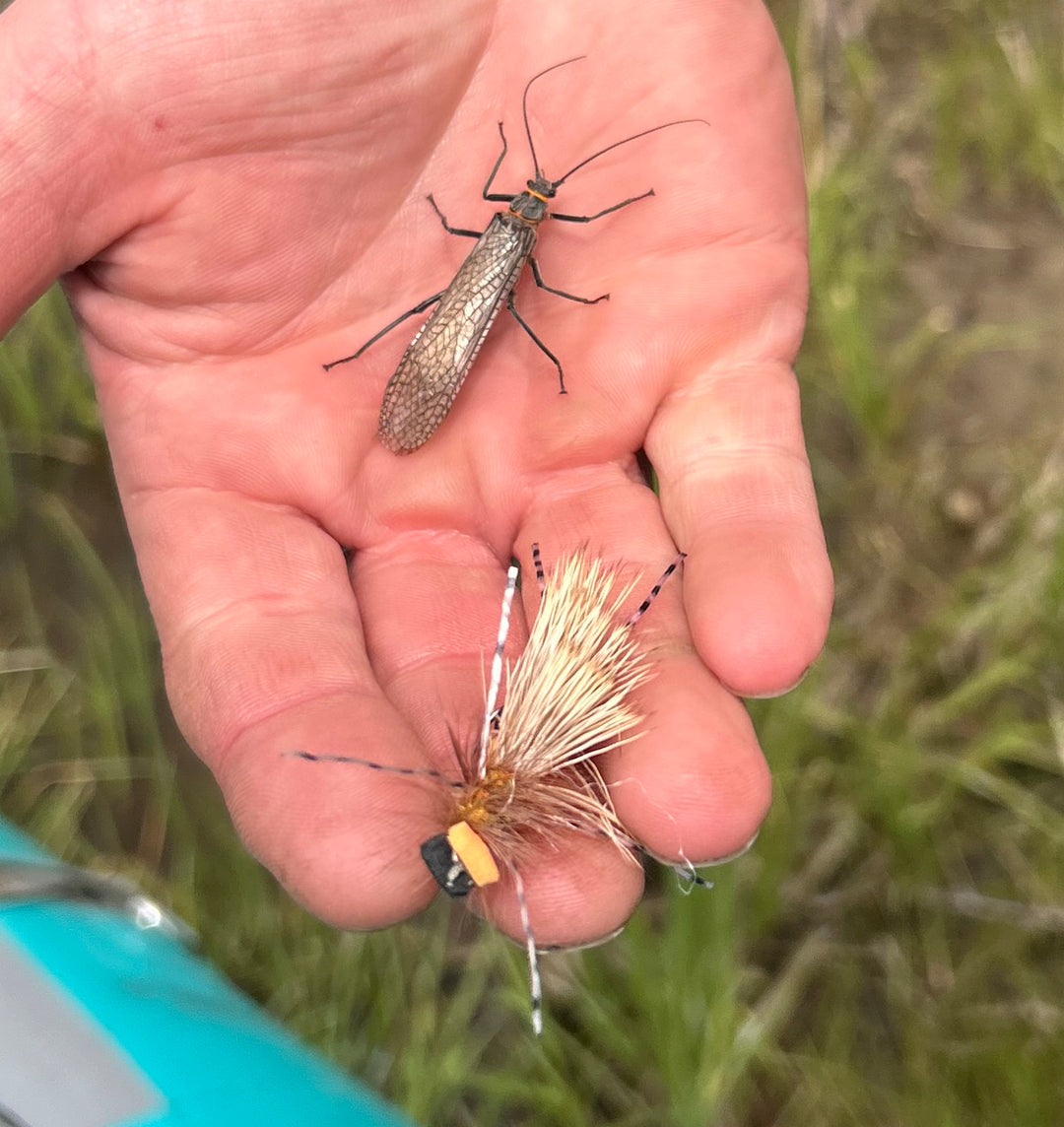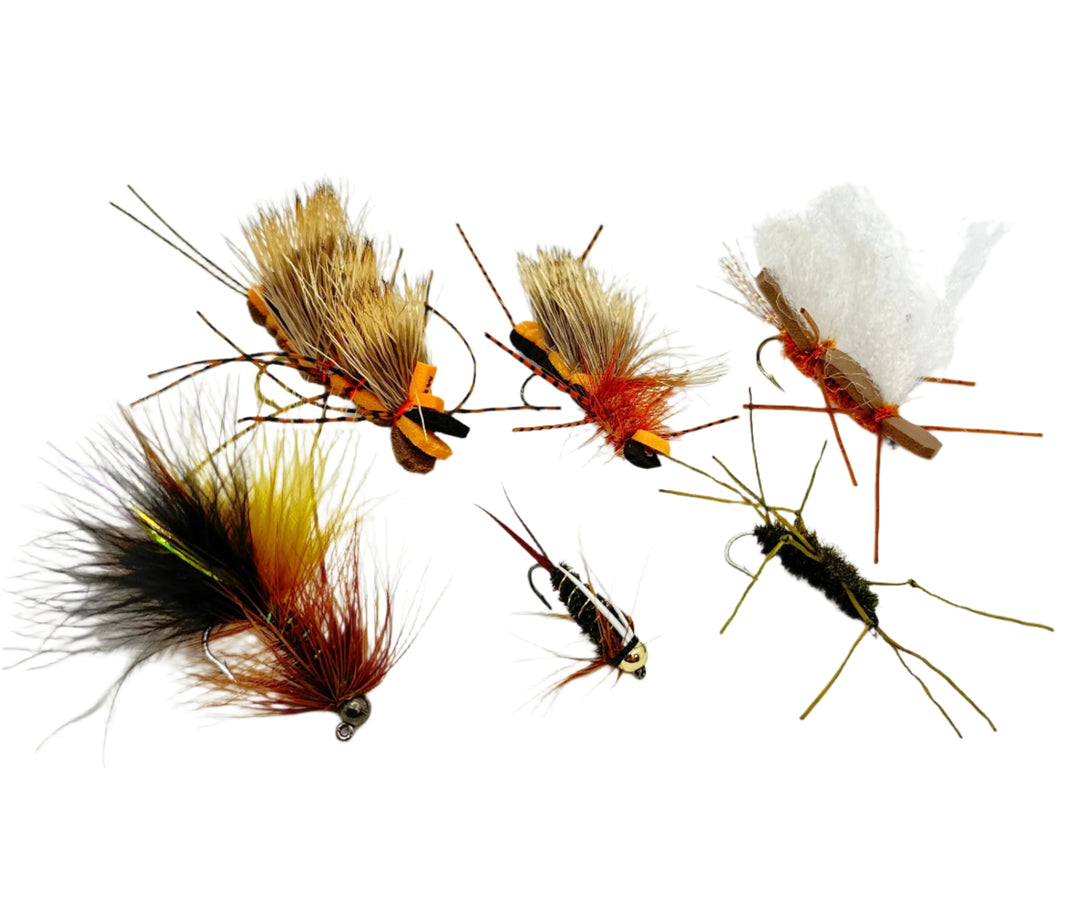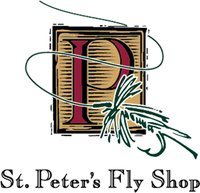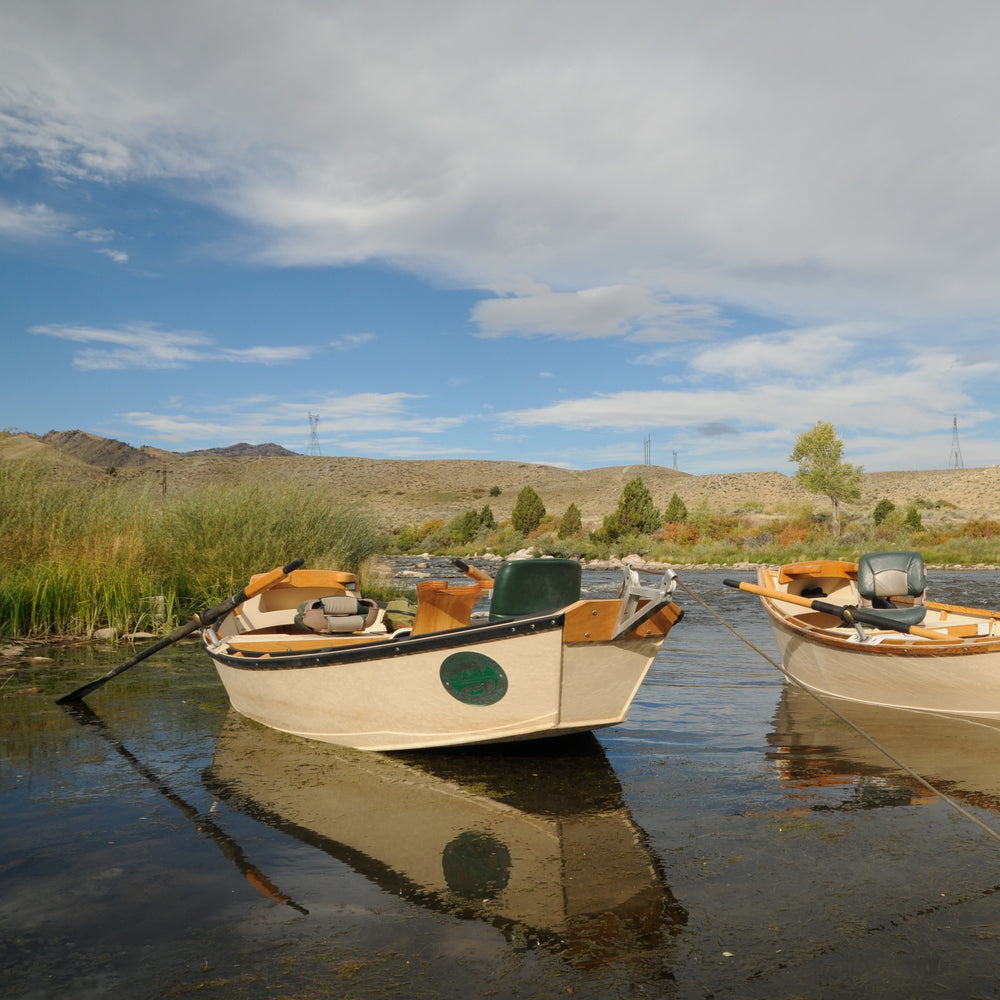Big bugs, high-water and happy fish!
Each year, right around this time, rivers begin to rise, and peak water flows are on the horizon. As big water season arrives, so do some of the largest aquatic insects of the year: Pteronarcys californica, more commonly known as salmonflies, begin their transformation from nymph to adult stage. The adventure starts as the nymphs crawl out of the water, molt from their shucks, and shortly after begin mating. After the reproduction process, the adult females return to the water, bouncing on the surface to lay their eggs.
During the transformation and reproduction process, every living creature supported by aquatic insects is acutely aware of the bug activity. At the top of that list are trout, as the salmonfly hatch creates the largest food source of the year.


As an angler, you should be just as keen on this massive reproduction process as there is no better time to catch trout on river. High water can be intimidating, but the reality is that to pursue trout during this hatch, you don’t need to be more than ankle deep in the water. The bugs are swarming the edges of the river and so are the fish. To “match the hatch” we recommend giving fish the option to eat the nymph or the adult form of the insect. That is why dry dropper rigs work the best. Many of the droppers(nymphs) that we use are large, number 6 or 8’s and are heavily weighted. This helps get the bugs
down in the zone quickly. To match the weight of the heavy nymph it is important
to use an extremely buoyant dry fly. The best patterns to get the high floating job done are massive foam body dries in size #4. Come on could there be anything better than watching a giant trout engulf a pterodactyl size bug? Not in our book!
Check out our Salmonfly Collection to see some of our shopstaff favorites.
Another magnificent aspect of fishing giant Salmonflies is the ability to upsize your tippets and leaders. High off-color water and monster bugs allow us to use 1x leaders with 1x-3x tippets for droppers. Check out the video below on how we like to rig for these hatches and conditions. We have the leaders and tippets available on our Salmonfly Collection page.
Lastly, but just as important as fly selection, is to make sure that your dry fly is floating properly. Even though you might be fishing giant foam dry flies, treating your fly with water-resistant products is a must. We recommend applying gel or liquid to your fly for the first use. After the fly has been destroyed by a trout, it is best to use dry shake to remove moisture from the fly. If the fly is wet and you apply more gel, then you will just sink the fly as the water is trapped in. That is why it is important to use the shake first.
On our Salmonfly Collection page, you will find our favorite water-repellent
applicants.


Salmonflies are out on many of the western freestone rivers, so now is the time to get out. The thickest hatches of Salmon Flies typically happen over the course of a few weeks. Don’t wait; hit the water and experience what is one of the most magnificent trout feeding events you’ll ever encounter.
For all of our favorite flies and terminal tackle we recommend for big bug time, check out our Salmonfly Collection page on our website or stop by the shops.






